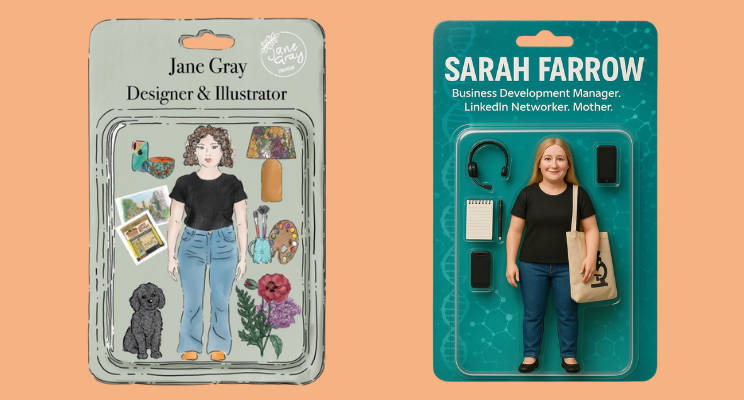Community First: A Roadmap for the Post-AI Internet
There doesn’t seem to be a topic outside of politics more polarising than AI.
The recent #AIdoll trend has sparked debate across social media. If you managed to escape the discourse, thousands of people across the internet used ChatGPT to reimagine themselves as action figures. Artists then fought back, posting pictures of their AI-free dolls.
Both sides raised valid criticisms. While artists found themselves, once again, defending their labor as legitimate work, supporters of the trend argued that AI art makes creative expression more accessible.
Once again, we were reminded that the ethical debate surrounding AI is complicated and we don’t have all of the answers yet.
It’s our responsibility to shape AI
We want to preface this section by stating that AI is not the enemy.
AI is an incredible tool, but in its current iteration, it cannot make decisions based on morality. Its ability to improve our lives depends heavily on the intentions of the humans using it.
AI cannot steal art unless a human being trains it on stolen artwork. AI cannot write hateful or dangerous content unless it is trained on such content. And while many criticize AI, it is simultaneously improving our lives in incredible ways.
For example, AI-bot dAIsy has been helping combat phone scammers by wasting their time. And ECgMLP is outperforming human doctors at accurately diagnosing endometrial cancer from medical images.
In the end, AI is just a tool; it’s up to us to steer its use in a helpful and ethical direction.
AI’s potential lies in facilitating human-human conversations, rather than replacing them
For better or worse, the digital world is overflowing with information. And like most resources, information follows the Law of Diminishing Marginal Utility: as the volume of content grows, its individual value shrinks. In other words, information is becoming less valuable because there is simply too much of it.
The result is an internet that is becoming increasingly saturated with content that is lazy and devoid of original thought or opinion. Google has been trying frantically to filter through the slop with changes to its algorithm. But even Google is beginning to struggle now that AI has accelerated content production.
If this continues, we’ll end up stuck in a content echo-chamber that regurgitates the same ideas, hacks, and phrases over and over again. This has the potential to spell disaster for creative thought and innovation.
However, it also has the potential to direct audiences to information sources they know and trust.
Instead of looking for solutions from strangers, buyers will turn to their peers, family, and wider network for guidance. This shift presents a unique opportunity for marketers to facilitate genuine, human-to-human connections with their audience and stand out in an AI-saturated world.
What you can do to prepare
In the post-AI internet, brands that prioritize creating original content will thrive. The good news is that there’s a lot you can do now to prepare for a future where true thought leadership is prioritized.
- Ask – is my content actually proving a unique perspective? Or are you just adding to the content slop? If your brand is a real expert or authority, has a unique voice, and a human perspective, you don’t need to worry.
- Don’t rely on AI for content ideation. There’s a difference between using AI to speed up creative work and letting it lead ideation. Instead of relying on AI for new content ideas, use your customers’ problems and perspectives to drive your content strategy.
- Instead of guessing what your audience wants, ask them. Give your buyers a seat at the table. Make sure your brand reflects their ideas and perspectives back at them by asking them what they think.
To get started now
Firstly, ask – how can you change your content creation process so that you’re using your audience’s pain points and challenges for inspiration?
At Bitesize Bio, our audience submits new content ideas via our Get Involved page, which we regularly use to guide our editorial strategy. This not only helps us stay relevant but also ensures that our content addresses the needs of real researchers.
Our last blog explored some potential co-creation tactics, but we’d love to hear if you come up with any more.
Are you a life science marketer looking for more content and community marketing insights? Subscribe to The Growth Factor and discover proven strategies for promoting your products and services. Sign up here.
